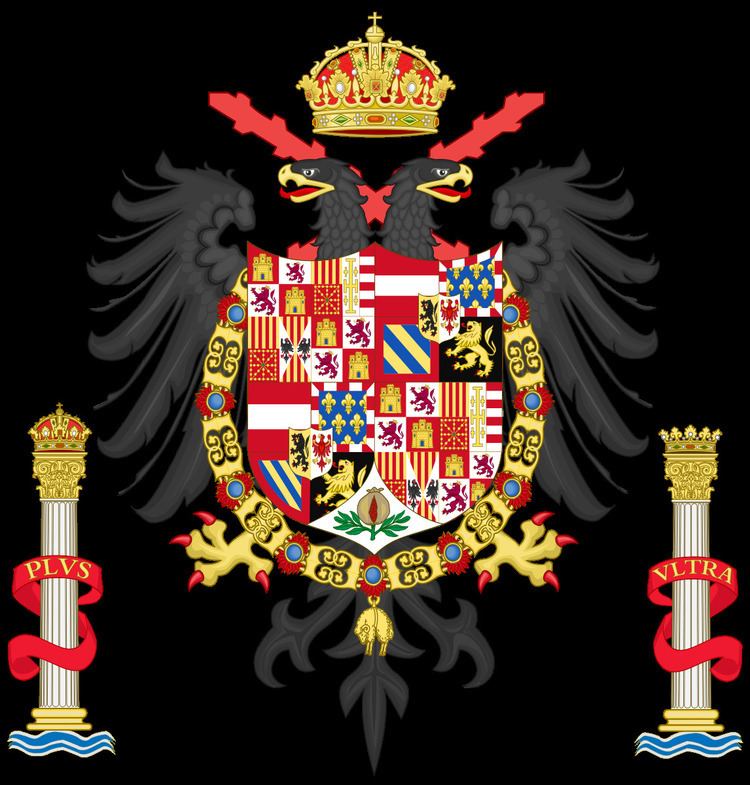Adopted 1530 | ||
 | ||
Escutcheon His maternal inheritance quartering his paternal inheritance Supporters Imperial Eagle and the Pillars of Hercules | ||
Charles V, Holy Roman Emperor, or Charles I of Spain, was the heir of four of Europe's leading royal houses. Charles was the first sole monarch of Spain, inheriting the kingdoms first united by his maternal grandparents, Isabella I of Castile and Ferdinand II of Aragon (the Catholic Monarchs). From his father, Philip I of Castile, he inherited the Burgundian Netherlands, which came from his paternal grandmother, Mary of Burgundy. Finally, on the death of his paternal grandfather, Maximilian I, Holy Roman Emperor, he inherited the Habsburg lands in Austria. His coat of arms, representing much of the land he inherited, is blazoned as follows:
Contents
Personal arms
The first and fourth quarters represents holdings derived from the Spanish crowns: that is, the quartered arms of Castile and Leon themselves quartered with the quartered arms of Aragon and Sicily. After 1520 the Aragon/Sicily quartering also incorporated the arms of Jerusalem, Naples, and Navarre.
The second and third quarters represents holdings derived from Charles's Austrian and Burgundian inheritance: these quarters shows further quartering of Austria, Duchy of Burgundy, County of Burgundy, and the Duchy of Brabant, with the escutcheon in the middle showing Flanders on the left and Tyrol on the right.
The Granada pomegranate is represented at the bottom between the two.
The Burgundian Inheritance and the Order of the Golden Fleece
In 1477, the territory of the Duchy of Burgundy had been conquered and annexed by France. In the same year, Mary "the Rich", the last Burgundian duke's only child, had married Charles' grandfather Maximilian, giving the Habsburgs control of the remainder of the Burgundian Inheritance: although the territory of the Duchy of Burgundy itself remained in the hands of France, the Habsburgs remained in control of the title of Duke of Burgundy and the other parts of the Burgundian inheritance, notably the Low Countries and the Free County of Burgundy in the Holy Roman Empire. They often used the term Burgundy to refer to it until the late 18th century, when the Austrian Netherlands were lost to the French Republic. Although Charles V had inherited the grand mastership of numerous orders, the only order which he habitually wore and awarded was that of the Burgundian Order of the Golden Fleece.
